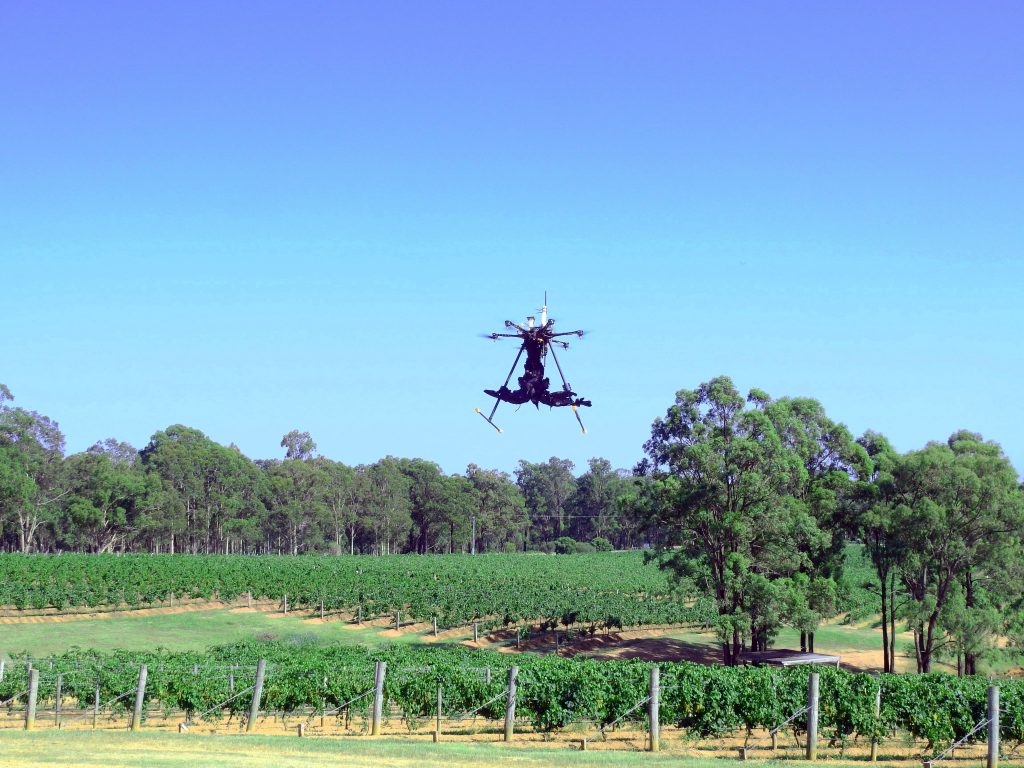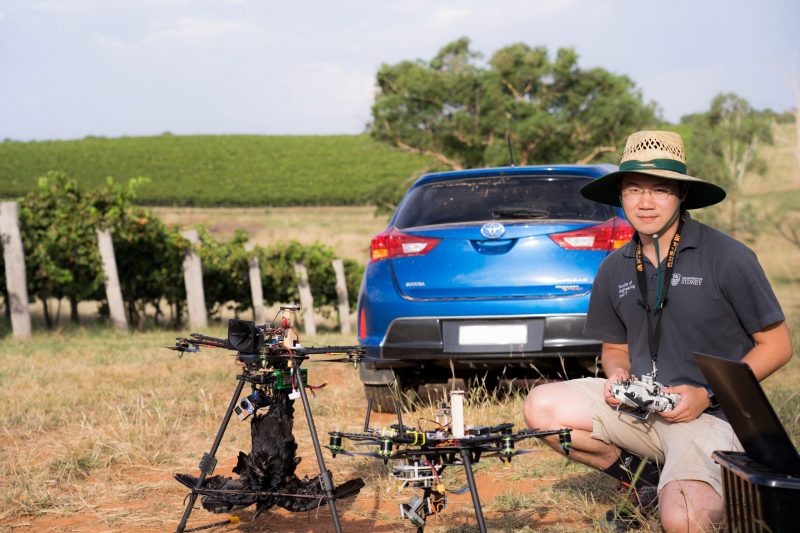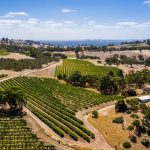Bird management in vineyards could soon be getting a high-tech upgrade, writes journalist Samuel Squire.
The use of autonomous unmanned aerial vehicles (UAVs) to deter pest birds has shown promise during initial trials in vineyards in New South Wales.
Lead researcher Zi Wang, a PhD candidate from Sydney University’s School of Aerospace, Mechanical and Mechatronic Engineering first trialled UAVs in vineyards between January and March 2018 to study bird responses to drones. He subsequently conducted a second trial during the same months in 2019 to establish the effectiveness of the drones in protecting winegrapes from bird pests.
“Both sets of the trials went really well and delivered promising results. Before the first trial we visited Dr Andrea Griffin, an expert in predator response from the University of Newcastle, to find out what would trigger the birds to learn our drone is their predator,” Wang said.
“We implemented her research findings, which is to combine bird distress signals and a visual cue for predation risk, then manually piloted the drone in a vineyard near Young, NSW. We determined the drone was very efficient at deterring a variety of species, including white cockatoos, ravens, silvereyes and common starlings.”
This year, Wang applied the drone method, alongside two other bird management methods (reflective devices and netting), together in the same vineyard for a seven-day period.
He found the drone performed similarly to netting in terms of protecting winegrapes from birds, repeating the study three times in Hilltops, Hunter Valley and Orange.

“The project can potentially improve how vineyards manage pest birds. Currently many vineyards either accept bird-caused vineyard damage as loss, or spend a significant amount of resources on netting and other bird-scaring devices,” he said.
“We learned that vineyards, on average, lose 15 per cent of their yields to bird-induced damage even with bird management in place. For the 146,000 hectares of vineyard in Australia, this amounts to more than $200 million just in bird damage.
“The project is aiming to change that by offering an autonomous drone system that can launch, carry out bird deterring missions and then recover, all autonomously without human input.”
Aside from Wang’s focus on using drones as a protectionary force against pest birds in the vineyard, he added this project could also be applied to other sectors as well.
“I believe the project can be applied to any situation where birds are unwelcome guests. The aviation industry, for example, needs to deter birds for the safety of air travel. Some public places, like train stations and private properties may also want to deter birds for various reasons,” he said.
“I also learned that bird deterring strategies are crucial near oil spill sites to prevent wildlife from getting contaminated.
“While we haven’t considered using the drone for spraying, we think it is possible to transform the current project into such an application in the future.”
Wang described the hurdles he and his research team jumped to get the project off the ground, saying it was a challenge to find the right experts to consult.
“When the project first started, we had some challenges looking for the right experts to visit and appropriate vineyards to conduct the trials in. But with the help of NSW Department of Primary Industry alongside Agent Oriented Software (the Melbourne-based company that supported this research), we were able to get in contact with many experts and friendly viticulturists,” he said.
“The biggest challenge right now is to make the system autonomous and reliable. For small vineyards, this is not so difficult. But for large vineyards (more than 100 hectares), where multiple drones and sensors are needed to provide sufficient protection, the complexity of the system makes this a challenging engineering problem.
Still working on autonomous technologies
“We are still working on the autonomous technologies to make this reliable and easy to use, but we have already made some headway. We have a prototype system with computer vision algorithms to detect where the birds are and send the drone towards the detected birds.
“Once this technology is reliable, viticulturists can save their resources for more important things in vineyard management.
“There is also very restrictive regulation on autonomous drone operation from the Civil Aviation Safety Authority (CASA). It will be a challenge to convince CASA to ease the restrictions, but it shouldn’t be a major problem if we can prove our system is reliable.”
Since completing his drone trials, Wang has received expressions of interest from various fruit growers in New South Wales, and he hopes his project will have much larger capabilities and applications in the near future.
“We have received many expressions of interest from blueberry, cherry and rice farmers across NSW. While we haven’t confirmed any visits, it should be expected that our project will be implemented in one of these industries in the near future,” he said.
“This project may also bring some relief to the issue of world hunger by increasing crop yields in developing countries.”
Wang said the research team is also considering a project expansion with technology to assist drone operations in vineyards.
“In addition to our initial findings, we learned that combining different scaring methods may also improve the efficacy of the drone system,” he said.
“We are contemplating a system where a ground vehicle equipped with predation risk generators, for example, distress call broadcast signalling and lighting that can complement drone activity.”
This article was originally published in the January issue of The Australian & New Zealand Grapegrower & Winemaker.





















